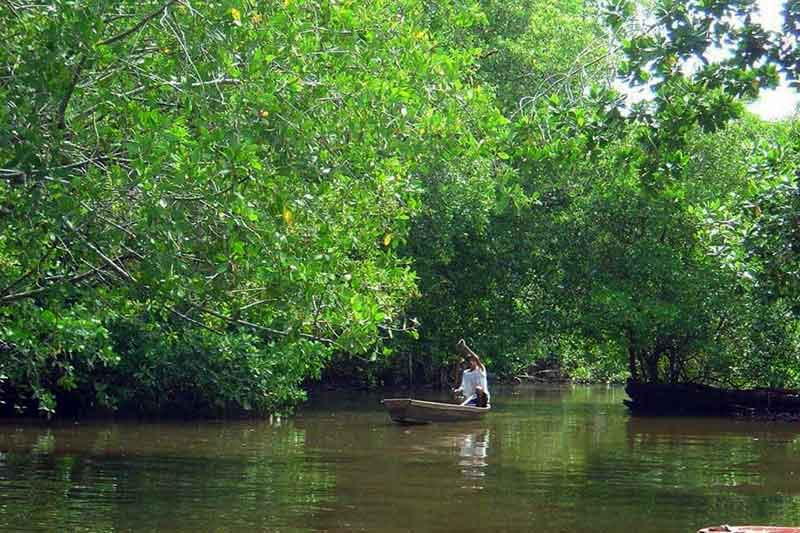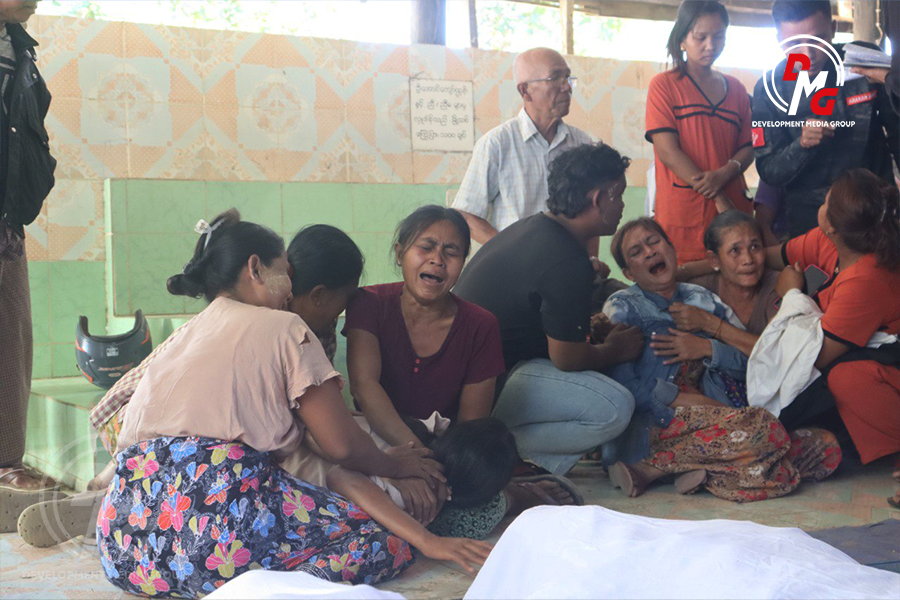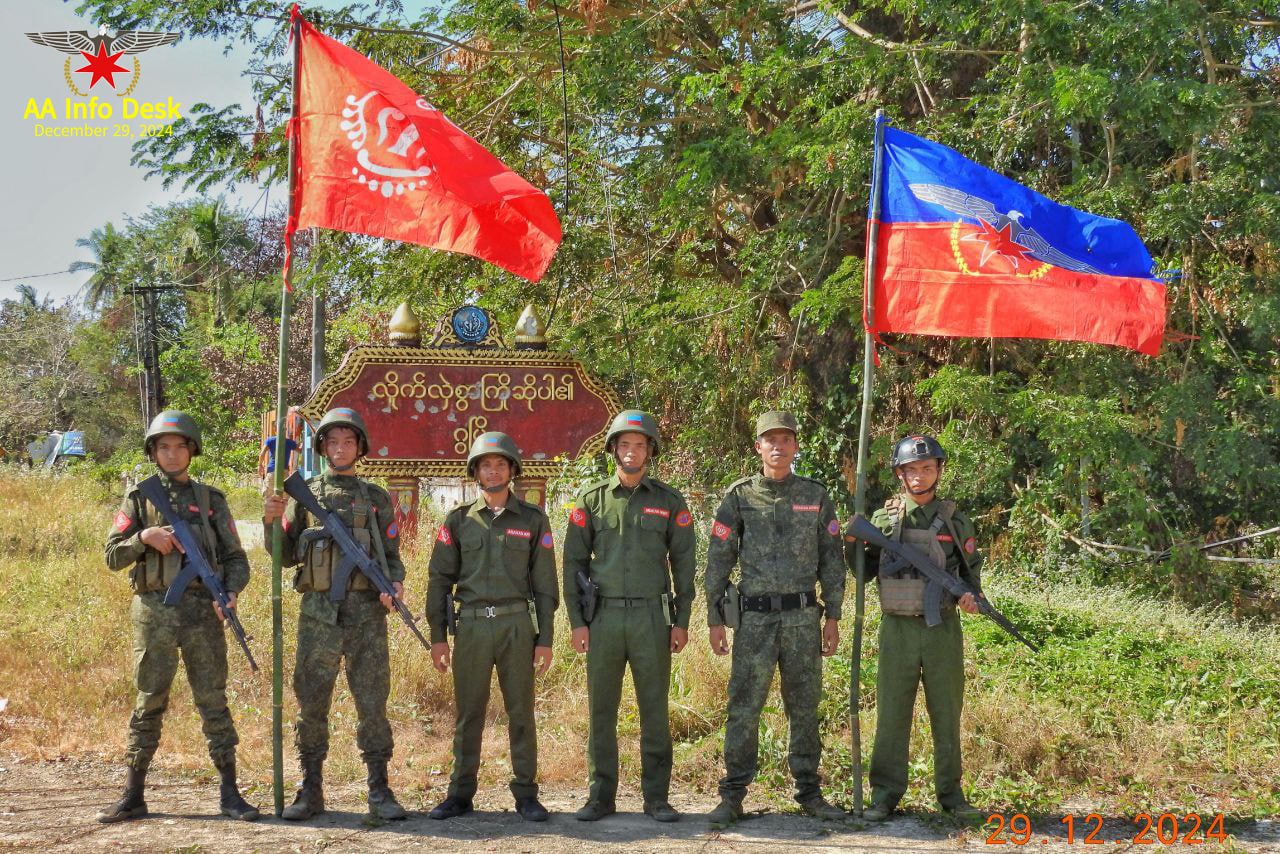- Junta unable to hold elections in dozens of wards and village-tracts in Sittwe, Kyaukphyu
- Fighting escalates between Myanmar military, Arakan Army in Ayeyarwady Region
- Regime steps up civilian arrests in Sittwe
- ULA safeguards Mrauk-U's ancient heritage
- Arakan on the Edge: What the DMG Landmine Impact Report Reveals About Myanmar's Deepening Humanitarian Crisis
Mangrove conservation up against socioeconomic realities of forest resources
Arakan State residents are deleteriously cutting down mangroves growing along the state’s coast to earn a living, say organisations working to conserve the valuable shoreline forests.
26 Jul 2020

Myat Swe and Win Nyunt | DMG
26 July, Sittwe
Arakan State residents are deleteriously cutting down mangroves growing along the state’s coast to earn a living, say organisations working to conserve the valuable shoreline forests.
Mangroves are deforested to sell firewood for brick-making fields and to make charcoal, said Ko Myo Lwin, a leader of the Ann Township Mangrove Trees Conservation Group.
“Villagers find it difficult to get a job for their living. Additionally, COVID-19 is one of the factors creating hardships for their living. That’s why some residents rely on mangrove forests for income,” said Ko Myo Lwin.
The current socioeconomic trends require that mangrove forests be conserved, he added.
The Ann Township Mangrove Trees Conservation Group said residents of several townships in Arakan State including Ann, Kyaukphyu, Myebon, Taungup and Ramree are taking the ax to mangroves every day.
The group is now working to reforest mangroves in Ann, Kyaukphyu, Taungup, Myebon and Pauktaw townships, Ko Myo Lwin told DMG.
“Fishermen in the townships are affected by the impacts of water pollution while they are also facing difficulties to do fishing because of more prawn and fish farming. So, we plant and conserve mangrove plants so that fishermen can do fishing well in communal fishing areas,” he said.
The Forest Department said it compiles and updates information on mangrove forests throughout Myanmar once every five years. The most recent tabulations, from 2015, found that Arakan State had 395,726 acres of mangroves in total.
U Zaw Myo Hlaing, assistant director of the Arakan State Forest Department, said: “We will check whether mangrove forests are destroyed or not after 2020 under the Forest Department Climate Change Adaptation [FDCCA] programme.”
Cooperation on the project between the Arakan State Forest Department and the Danish Embassy has taken the form of financing and technical aid in Ramree and Myebon townships, the Arakan State Forest Department said.
But plans to grow mangrove trees have been suspended in Myebon Township due to regional instability, while a total of 250 acres of mangroves has been planted annually in Ramree Township under the FDCCA’s five-year project, it said.
In November 2019, the Environment and Mangrove Forest Conservation Group (Harp) and Humanitarian Support Network (MSN) worked together planting mangrove trees worth about K20 million (US$14,600) at seven mangrove forests in Manaung Township.
Ko Yan Naung Soe, secretary of the Rakhine State Biodiversity and Nature Conservation Association, told DMG that the RBANCA is mainly conserving mangrove forests grown near Nantha Island and the Mayyu Estuary.
“We will work with residents to avoid deforestation of mangrove plants. It takes many years to become a big mangrove plant. So, we will protect mangrove plants as a first priority,” he said.
There are about 300 acres of mangrove forest near Nantha Island and the Mayyu Estuary, RBANCA said.
In addition to being sold as firewood and charcoal, mangrove plants are also cut down to develop areas for prawn or fish farming, or to make way for dams, destroying the habitats of aquatic wildlife, mangrove conservation activists said.

















